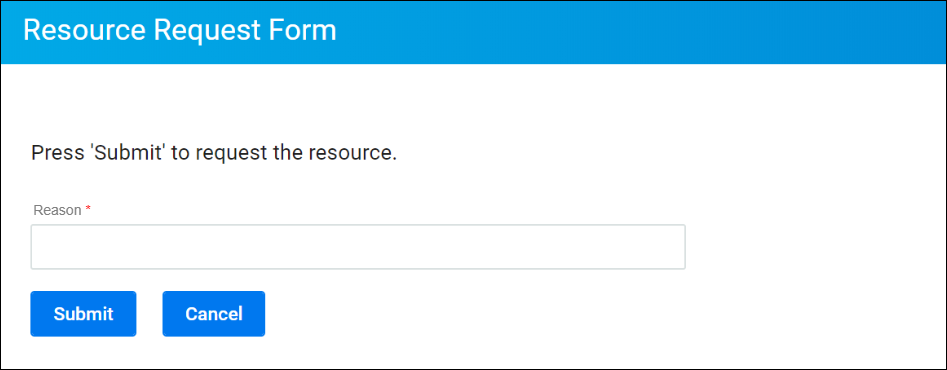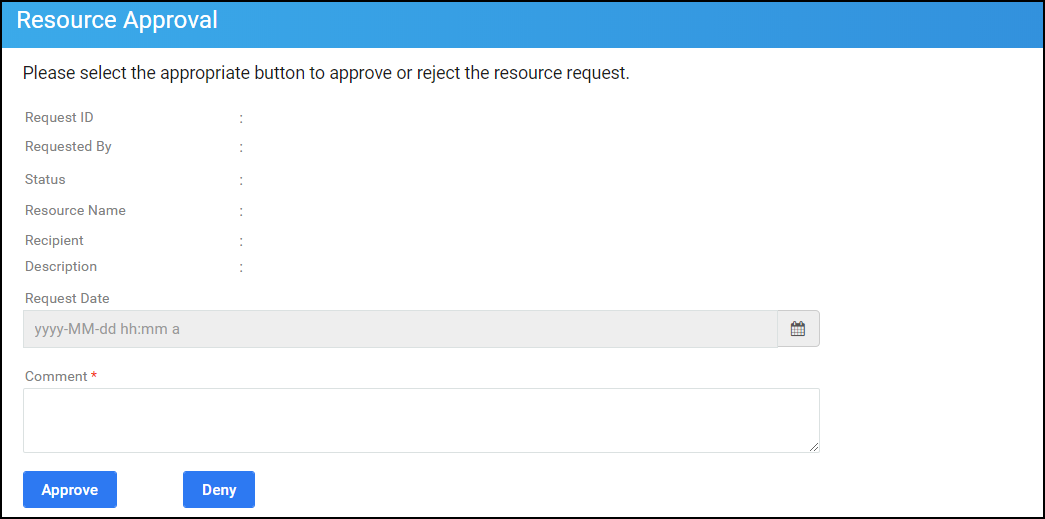5.1 About Forms
Forms allow the user to make a provisioning request, approve a provisioning request, and provide input during requests and approvals. Approval forms are available when the user chooses any of the actions in the Task Notifications pane of the Identity Applications My Tasks page.
Identity Manager provides two methods to define the appearance and behavior of the Form Detail section of the Identity Applications requests and approvals forms.
-
Forms Created in the new Form Builder: Identity Manager introduces a new Form Builder for creating forms and managing forms. The Form Builder is embedded within Designer. You can launch it by selecting the JSON Forms tab in the provisioning request definition editor of Designer. Its interface is intuitive and supports simple drag and drop features that enable you to quickly create and modify forms.
The new Form Builder provides the following advantages:
-
Provides drag and drop features to enable you to quickly create modern and responsive forms.
-
Allows the forms to be used by multiple PRDs.
-
Simplifies the connections between forms and REST APIs.
-
Provides multiple components (widgets).
For more details, see NetIQ Identity Manager - User’s Guide to Form Builder.
-
-
Legacy Forms: Identity Manager continues to support the legacy method of creating and managing forms in this version. This method requires you to configure and customize these processes from within Designer. These predefined processes are compatible with all Identity Manager releases. For creating new forms, you are recommended to use the new Form Builder.
About Request Forms
You can create one request form for a provisioning request definition. The request form is associated with the workflow’s Start Activity.
Figure 5-1 is an example of a resource request form. The user enters details in the resource request form and selects an appropriate action based on the details entered.
Figure 5-1 Resource Request Form

About Approval Forms
You can define multiple approval forms for a provisioning request definition, but only one form per Approval Activity. You can specify the approval form to associate with an approval activity in the properties for the activity. You can create an approval form via the Forms tab, the JSON Forms tab, or from the approval activities property sheet. Figure 5-2 is an example of a Resource Approval Form.
Figure 5-2 Request Approval Form

5.1.1 About Form Control Data Binding
All of the fields you define for a form by using the new Form Builder or the legacy Forms tab are automatically available for data binding in the Data Item Mapping property sheet. Two bindings, or mappings, are possible for each form field: a pre-activity mapping to initialize or pre-load a form field with data, and a post-activity mapping to move modified form data into the workflow document called flowdata. These data-item bindings, and any script expressions they use, execute on the application server as preparation of the form before it is sent to the client browser for display to the user. Common uses for pre-activity data-item mappings and their expressions that operate against the flow-data document are for moving previous approval data into the current approval or for setting default values for fields. For more information on data item mappings, see Defining the Data Item Mappings.
Some form controls allow you to initialize their values from data sources other than workflow data. For example, some list controls allow you to specify the initial value as a property of the control. For more information about defining initial values, see Form Control Reference.
5.1.2 About Forms and Events
Designer allows you to define action scripts that execute on the form control’s onLoad, onChange, or custom events. Each form control supports an Events property where you supply the script for the event. The scripts you define have an event-level scope and execute in the browser of the user’s client machine.
The Events property provides access to Designer’s Event Action Expression Builder, which allows you to create script expressions that refer to and modify form and data. Because form control event scripts execute in the client browser, they do not have access to the flow-data document. They do have access to directory abstraction layer queries.
The Event Action Expression Builder also provides access to the Form Action methods (shown in the left column). This column provides access to the form action script API along with directory abstraction layer query objects. The form action script API is written in JavaScript so that you can add conditions, loops, and user-defined functions. For more information about the Form Action API, see Form Action Script Methods. To import or include a JavaScript library, you use the Scripts tab of the Form Controls area. For more information, see Using the Scripts Tab.